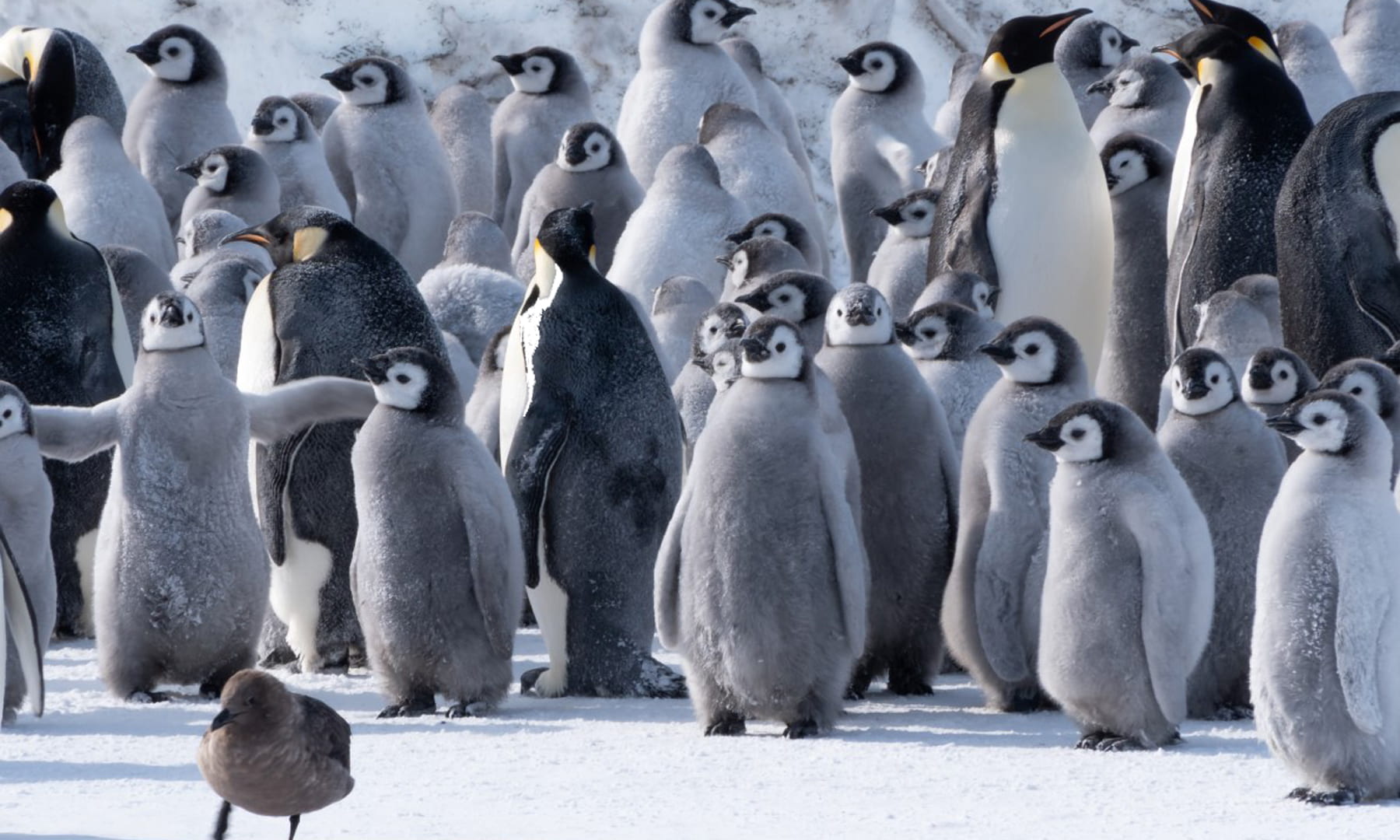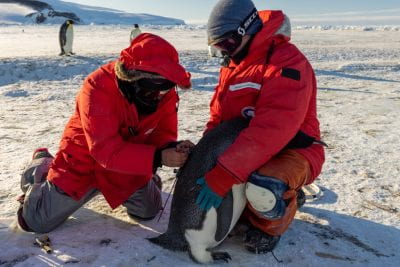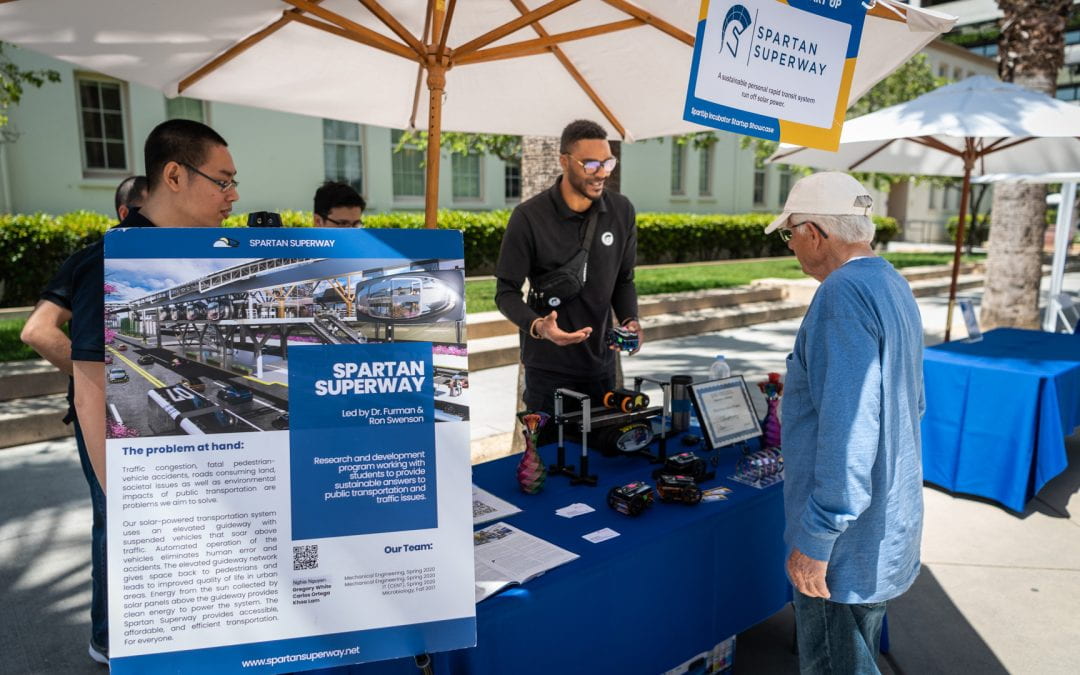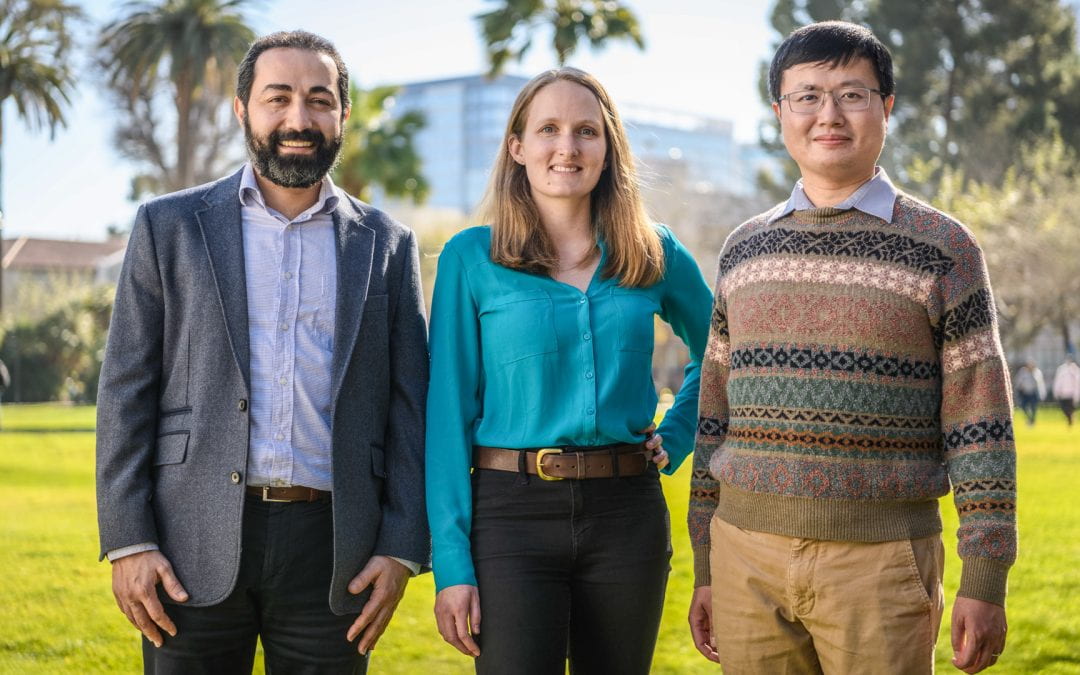SJSU Researchers Track Emperor Penguins to Learn More About Climate Change

SJSU researchers from Moss Landing Marine Laboratories have teamed with scientists from New Zealand to monitor how emperor penguins live and how climate change affects them. Photo: Anthony Powell, Antarctica New Zealand ACA 2023-003
Last month, San José State researchers from the Moss Landing Marine Laboratories found themselves far from home in the -35°F temperatures of Antarctica, learning more about the majestic emperor penguins. The largest penguins on the planet and the subject of numerous movies and documentaries, emperor penguins are vital sentinels of climate change. SJSU researchers are monitoring how they live and move, as well as what can be done to better protect them from environmental threats.
“We’re hoping to learn where the emperor penguins are going, how deep they are diving, how hard they have to work to get their food,” says Birgitte McDonald, associate professor of vertebrate ecology at San José State University, who led the team on the ice. “This work will help us to understand how the [Ross Sea] Marine Protected Area is functioning and if changes need to be made in order to protect the species here.”
The collaborative field research — funded in part by the National Science Foundation — between SJSU faculty and student researchers and a team of scientists from New Zealand’s National Institute of Water and Atmospheric Research (NIWA) supports the Ross Sea Region Research and Monitoring Programs (Ross-RAMP), a five-year program designed to evaluate the effectiveness of the Ross Sea Marine Protected Area in the Antarctic. This oceanic region is the world’s largest protected marine area.

Penguins are fitted with a GPS-based data logger to track how they move and their efforts in catching food.
Over the course of five years, this project will provide critical information on the foraging and behavior of the emperor penguin. As ice-dependent predators, they are indicators of both drastic and subtle changes occurring throughout the food web and the state of the sea ice.
“Penguins, especially these penguins, are sentinels of change. They’re sort of the canaries in the coal mine,” says SJSU postdoctoral researcher Caitlin Kroeger. “When something’s wrong, especially with climate change, things are going to be changing very rapidly in a polar place, and this is the last area for them.”
Researchers fit penguins’ feathers with GPS-based data loggers, likened to human fitness trackers, to record their movement and how they catch food. The loggers can tell researchers how far and how fast a penguin travels, as well as whether it’s walking, swimming or sliding.
Emperor penguins can dive to almost 500 meters and hold their breath for 30 minutes. During dives deeper than 400 meters, a penguin’s heart rate routinely decreases to below 20 beats per minute, and can get as low as 8 beats per minute. The emperor penguin dive patterns, population dynamics and feeding behavior provide an indication of the health of the Ross Sea ecosystem at large.
“The penguin data loggers have a pressure sensor and a temperature sensor,“ explains Parker Forman, ’23 MS Marine Science, “so we can do to little bit of habitat modeling, and there’s also an accelerometer on board so we know the positioning of a penguin — whether it was standing, tobogganing or swimming. We’re actually able to count how many strokes the penguin took.”




